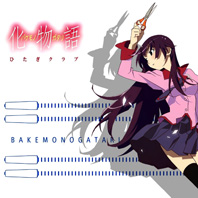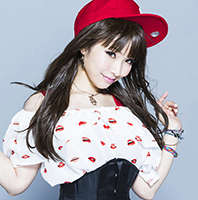Katakana
Introduction of the Japanese Katakana alphabet
About Katakana
Katakana is one of three characters used in the Japanese language.
Katakana is a phonetic alphabet - each letter represents the sound of a syllable (like English ABC). Letter itself has no meaning.
Katakana and Hiragana represent exactly the same set of sounds.
Katakana is used mostly for foreign loan words.
You can download/print Katakana chart (PDF) of all Katakana letters.
Origin
| Katakana | ア | カ | タ | マ | ヤ |
|---|---|---|---|---|---|
| Original Kanji | 阿 | 加 | 多 | 万 | 也 |
Katakana was developed in the 8th century by simplifying the form of Kanji symbols.
Many Katakana letters look exactly the same as a part of its original Kanji.
Some of Hiragana and Katakana letters were made from the same Kanji symbol.
Many of Katakana letters look exactly the same as a part of its original Kanji.
Number of Letters
In modern Japanese, there are 46 basic Katakana letters.
In addition to these 46 basic letters called gojūon, there are modified forms to describe more sounds - 20 dakuon, 5 handakuon, 36 yōon, 1 sokuon and 6 additional letters.
FAQ: What are the letters with a bar on top (ā ū ē ō)?
Gojūon (五十音)
| a column |
i column |
u column |
e column |
o column |
|
|---|---|---|---|---|---|
| a row |
|||||
| a | i | u | e | o | |
| ka row |
|||||
| ka | ki | ku | ke | ko | |
| sa row |
|||||
| sa | shi | su | se | so | |
| ta row |
|||||
| ta | chi | tsu | te | to | |
| na row |
|||||
| na | ni | nu | ne | no | |
| ha row |
|||||
| ha | hi | fu | he | ho | |
| ma row |
|||||
| ma | mi | mu | me | mo | |
| ya row |
|||||
| ya | (i) | yu | (e) | yo | |
| ra row |
|||||
| ra | ri | ru | re | ro | |
| wa row |
|||||
| wa | (i) | (u) | (e) | o | |
| n | |||||
Gojūon-zu (五十音図)
Traditionally, sounds of basic syllables are organized in the form of a table (5 x 10). This table is called gojūon-zu (literally means table of 50 sounds).
To describe these sounds, Katakana and Hiragana alphabets are used.
Letters イ, ウ and エ appear more than once in the table. These 5 duplicates (colored in gray) are usually skipped or ignored.
Another syllable ン is included. It doesn't belong to any row or column.
In total, 46 letters (45+1) are counted as gojūon (50 sounds).
Structure of the Table
The structure is exactly the same as the Hiragana table.
The first row - ア[a], イ[i], ウ[u], エ[e] and オ[o] are five vowels of the Japanese language.
Letters in the same column contain the same vowel.
Letters in the same row are considered to contain the same consonant.
Letters オ[o] and ヲ[o] represent the same sound. Letter ヲ is rarely used.
Dakuon (濁音)
| a column |
i column |
u column |
e column |
o column |
|
|---|---|---|---|---|---|
| ga row |
|||||
| ga | gi | gu | ge | go | |
| za row |
|||||
| za | ji | zu | ze | zo | |
| da row |
|||||
| da | ji | zu | de | do | |
| ba row |
|||||
| ba | bi | bu | be | bo |
Dakuon literally means turbid or murky sound. It is the voiced sound of カ[ka], サ[sa], タ[ta] and ハ[ha]-row syllables.
Dakuon is indicated with two small dots.
Pronunciation of ジ[ji] and ヂ[ji], ズ[zu] and ヅ[zu] are the same.
Letters ヂ and ヅ are rarely used.
Handakuon (半濁音)
| a column |
i column |
u column |
e column |
o column |
|
|---|---|---|---|---|---|
| pa row |
|||||
| pa | pi | pu | pe | po |
Handakuon literally means half-turbid or half-murky sound.
Handakuon is indicated with a small circle.
Yōon (拗音)
| kya | kyu | kyo |
| sha | shu | sho |
| cha | chu | cho |
| nya | nyu | nyo |
| hya | hyu | hyo |
| mya | myu | myo |
| rya | ryu | ryo |
| gya | gyu | gyo |
| ja | ju | jo |
| ja | ju | jo |
| bya | byu | byo |
| pya | pyu | pyo |
Yōon is a combination of the consonant of i-column syllables and ya, yu or yo. For example, k + ya = kya.
Yōon is described by i-column letters associated with ャ(small ya), ュ(small yu) or ョ(small yo). For example, キ + ャ = キャ[kya].
Pronunciation of ジャ[ja], ジュ[ju], ジョ[jo] and ヂャ[ja], ヂュ[ju], ヂョ[jo] are the same.
Letters ヂャ, ヂュ, ヂョ are rarely used.
Sokuon (促音)
| pause |
Sokuon is a pause (no sound) between two syllables.
Sokuon is described by ッ(small ツ[tsu]).
| Examples |
|---|
| サッカー[sakkā] メッセージ[messēji] ポケット[poketto] カップ[kappu] |
Additional Letters
These additional letters are invented in modern era to describe the sound of foreign languages.
| Examples |
|---|
| ファ[fa] ティ[ti] ドゥ[du] ウェ[we] フォ[fo] |
ァ, ィ, ゥ, ェ and ォ(small ア[a] イ[i] ウ[u] エ[e] オ[o]) are attached after particular letters.
| Examples |
|---|
| ヴァ[va] ヴィ[vi] ヴ[vu] ヴェ[ve] ヴォ[vo] |
ヴ is used for [v] sound.
Long Vowels
| ā ii ū ē ō |
Long vowels are indicated with ー(horizontal bar).
| Examples |
|---|
| カーテン[kāten] ビール[biiru] ユーロ[yūro] ケーキ[kēki] コート[kōto] |
Printable Katakana Chart
| Item | File Type | Size |
|---|---|---|
| Katakana Chart | 342 KB |
Click the link listed above. PDF file will be displayed (1 page).
To save the file, choose [Save As...] from the file menu.
To print-out the file, choose [Print...] from the file menu.
Learning Katakana
Learning Katakana is easy. It takes about 3-20 days in general.
Common order of character study is Hiragana first, Katakana next, and then Kanji.
See Study Guide page for more details.
Katakana Course
Free online study program for learning how to read, write and type the Katakana alphabet fast and easy.
The program includes random-order drill exercise, audio recordings, handwriting practice and more.
See Katakana Course page for more details.











